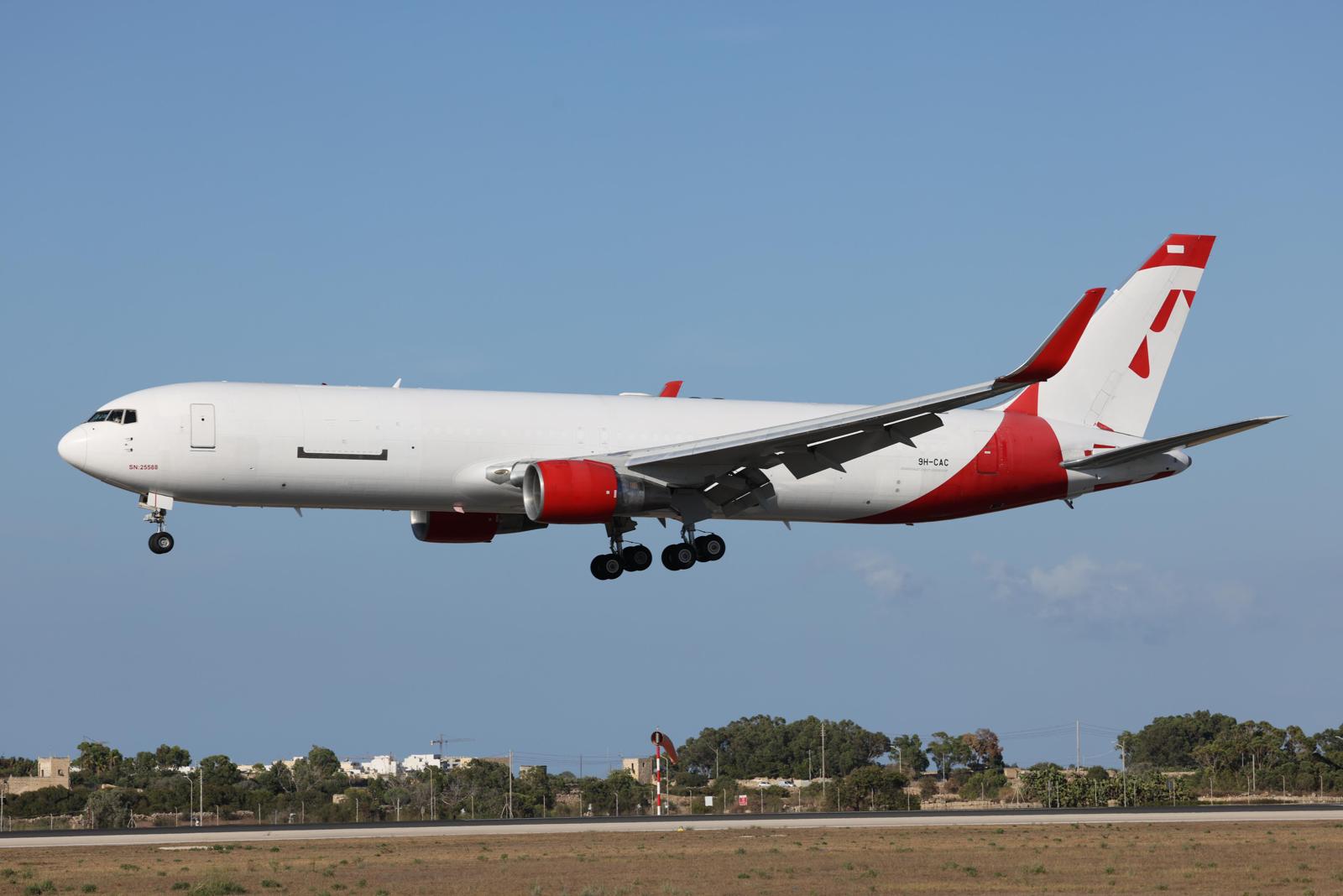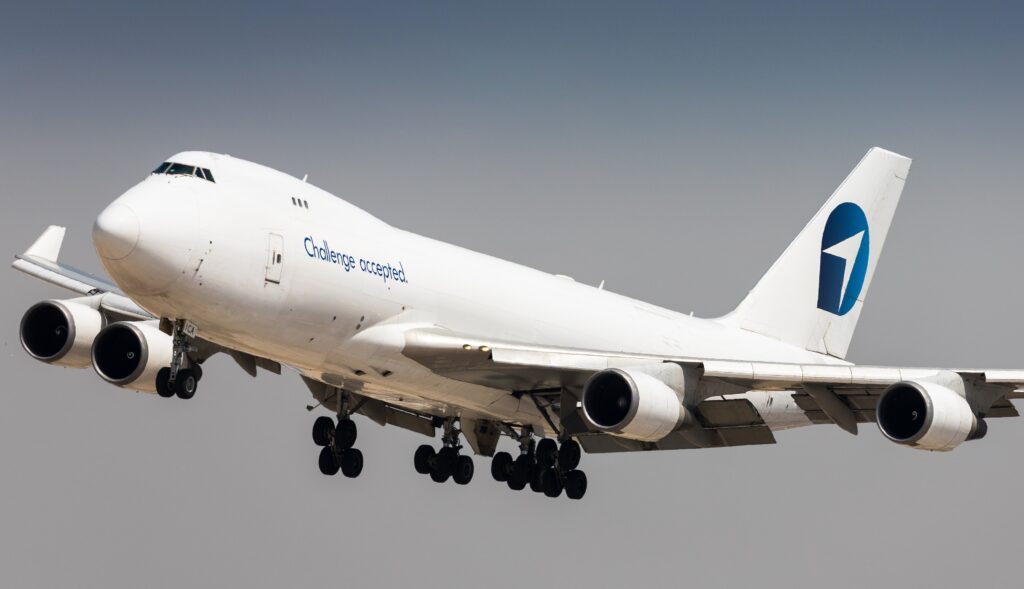Challenge charges ahead with fleet and route expansion
03 / 11 / 2023

B767-300BDSF. Photo: Challenge Group
Freighter operator Challenge Group is forging ahead with the growth of its routes as well as its fleet, says chief commercial officer, Or Zak.
Challenge Group is on course to operate a mix of 12 Boeing freighters by 2026, adding four 767 and four 777 converted aircraft, expanding beyond its traditional fleet ‘DNA’ of four 747Fs.
The Maltese-headquartered Group, with a European hub in Liege, took delivery in August this year of its first B767-300BDSF (BEDEK Special Freighter) aircraft.
Another three 767-300BDSFs, each with a cargo-carrying capacity of around 60 tonnes, are in the pipeline and will start flying over the next nine months.
Or Zak, chief commercial officer of Challenge Group, says: “We’ve been working on this project for nearly four years. The other three 767s will join us throughout this year and the first half of 2024.”
The initial plan is to operate the 767s on short-haul flights throughout Challenge’s existing scheduled network, such as Liege-Tel Aviv, Liege-Oslo and transatlantic legs between Liege and New York’s JFK.
For transatlantic services the idea is to gradually increase capacity on the current routes when the second, third and fourth 767Fs join, freeing up the 747–400Fs to expand the network and introduce new destinations.
The process of new routes has already begun, with the launch earlier this year of a weekly 747-400F flight between Istanbul and Liege, and from there to network destinations across Europe, as well as to the US and Asia.
The 767Fs, which are more suited to serving the Istanbul route in terms of commodities carried and the length of flight, will be transitioned onto the route.
Asked whether Challenge has ambitions to expand the fleet to more than four 767 converted aircraft, Zak says: “For the time being we are happy with the plan and are not looking beyond those four 767 aircraft.”
While the current focus is on integrating the 767Fs in the Challenge fleet, management is also looking at its already announced wider expansion plans, the introduction of four Boeing 777 converted freighters.
Zak says: “Boeing 747 freighters have been in the DNA of this group and now we have a massive change for us, not only adding new aircraft but adding a new fleet.”
Challenge is now part-way through a 10-year strategic fleet expansion plan to become a global player.
Zak stresses that the strategy was in place before Covid struck and the conversion slots for both the 767s and the 777s were booked prior to Covid.

Boeing B747-400F. Photo: Challenge Group
747s still important
There are no plans to drop the group’s 747 freighters but there is a realism that older, less environmentally friendly four-engine aircraft will become less popular over time.
Zak says: “The Boeing 747 is a great aircraft and everybody likes it, but it is not getting any younger. At some point, but not in the near future, it will need to be retired but there are still a few good years left for it to operate.”
Challenge’s 747Fs will operate alongside the 767Fs and 777Fs as part of a complementary fleet serving a wide range of commodities and customers.
Zak says: “Although the 747 and the 777 share some characteristics they are quite different to each other, and unfortunately, they have not yet come up with a nose-loading 777F.”
He adds that there is still great demand in the air cargo market for nose-loader freighters: “On a nearly daily basis we are shipping shipments which require a nose loader aircraft.
“But as the 747F starts to phase out, there will still be Antonov 124s out there which will be able to support demand.
“The question is whether the entire market can rely on just the AN-124s for such commodities, but I don’t think so. However, there is still some time before all the 747 freighters will be phased out.”
The last nose-loading 747-8 freighter, has rolled off the production line, but will be around for at least another 30 years: “So the option will still be there,” stresses Zak.
Challenge operates an all-Boeing fleet. “We have always operated the Boeing aircraft, the 747–200s and – 400s. Clearly, for the fleet size that we are planning to have in three years’ time, some 12 or 13 aircraft, there is much more added value by maintaining just one main manufacture versus a mix.”
“So, keep it simple versus the complexity of operating with two manufacturers.”
The route network for the 777Fs has yet to be confirmed by Challenge but it is likely that the new entrants to the fleet will share some routes with the 747Fs.
The 777Fs will probably fly to China to exploit their fuel-saving and other ‘value-add’ benefits, replacing the B747Fs where appropriate, while the latter’s nose-loading option will see them deployed for certain markets as required.
Challenge’s North America expansion plan has been waiting for the 767Fs to come on board, not just for new destinations to the US but for the decision on a hub airport, replicating where possible the successful story in Europe.
“We have been looking at a few destinations in the US and I can say that we will have a new destination in the US within the next few months,” says Zak.
Choosing a new route has not been easy, given the ups and downs in the market due to global economic turbulence.
“What we have witnessed, not just us, but everybody else, is that the market has been so volatile. You can make plans today and then throw them out the window tomorrow because the market has changed completely.
“What we have proven in the past is that whenever we select a new destination, we don’t want it to be an ad hoc thing. We are today flying on a scheduled basis to destinations in the US.
“We are preparing the ground and doing all the hard work to make sure that we can sustain those flights to the new destination on a scheduled basis.”
Seeking a US partner
As for the US hub, Zak says: “The idea of setting up a hub in the US has been there for quite some time.
“In Liege, we were the first ground handler, and we are now also the biggest in terms of square metres, with four facilities and quite a diverse operation.”
Zak explains that it makes sense to try to “copy paste” what Challenge has in Liege to the US.
One important aspect is finding a strategic partner in selecting a hub, for example a key customer, as with Liege, that stood behind the European operation and enabled the hub to grow.
“That is also what we are looking for the US, a strategic partner happy to join hands with us on this adventure which has a lot of potential, as with Liege.”
The potential US partner, could be a freight forwarder or another airline “completing our offer and value proposition”, says Zak, adding: “But if we look at our history in setting up Liege it was a shipper who supported and added value back then in what was a very small airport in terms of the operation.
“But together we saw the potential in setting up something new and using it as its distribution centre in Europe, and I think it is also what we’re looking at today in the US.”
Zak notes that the North American air cargo market is on a different scale to Europe, with the east coast, the west coast and the mid-west regions: “Each one of them is unique by itself and completely different to each other.”
He continues: “From a geographical point of view, we are going to focus on a certain region, because you will never be able to cover the entire US from one airport, it is too big to do that.”
Challenge has also established Tel Aviv as a “mini hub” for Chinese exports with a four-times-a-week 747F out of Hong Kong that will soon go to daily due to the additional 767F.
“We’re positioning Tel Aviv not only as the end destination for inbound traffic from Hong Kong but also as a transit point on the way to Europe that connects with our US network.”
Challenge is also targeting e-commerce, one of the product verticals, such as pharma, live animals transport, cars, aircraft engines and oil & gas, where Challenge has focused on offering customers an end-to-end solution with its freighter network.
Zak says: “Our main focus is on the verticals and special cargo, anything that requires a freighter, the expertise, knowledge and know-how to offer our customers, not just an airport-to-airport solution like everyone else, but also the ancillary services that will combine into the end-to-end solution.”
Challenge has identified a gap in the e-commerce market for goods coming out of China. Typically, an airline will give the e-commerce shipment to a local player in Europe who will take it back to his warehouse where the last-mile providers will take over.
At Liege, Challenge acts as the mid-mile provider, not only flying the e-commerce out of China but handling the customs clearance in Liege, breaking down the consignment in the destination country for the last mile provider, delivering the parcels to the first domestic distribution centre in each European country.
Some large freight forwarders are using the Liege service for inbound and outbound cargo as a way to consolidate and de-consolidate shipments and later using Challenge’s road feeder services.
“We offer the customer a faster turnaround and improved transit time which means we are saving them some costs as well. It is a win-win situation for them and us.”
Challenge Group adds first 767-300BDSF to its freighter fleet














